‘Damn the Valley’: A Gritty, Riveting Story of Paratroopers at War in Afghanistan
by Heath Hansen
When William Yeske asked if I’d be interested in reviewing his book, Damn The Valley, I was eager to see what he had put on paper. As I found out later, he’d served as an 82nd Airborne Paratrooper, in the 508th Parachute Infantry Regiment (PIR). Considering I had been a paratrooper with the 504th PIR, and our barracks buildings were next door to each other, I felt even more inclined to see what he, and his unit, did overseas.
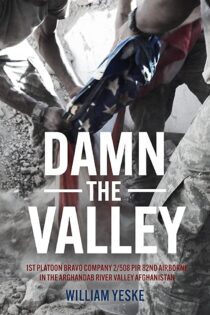
Back in 2007, shortly before we deployed to Iraq, and the 508th prepared for Afghanistan, we would regularly get into fist-fights with our brothers-in-arms in the shared parking lot of the barracks. I remember one Saturday night, some of my buddies and I were drinking on the second story porch of our barracks building, when a few 508th guys went walking by.
Being drunk, infantrymen, we naturally started talking shit to them. One of them decided to throw his Budweiser at us. It shattered on the steel railing near me. Glass shards exploded all over my face and arms. We ran down the stairs and started swinging. More guys jumped in (from both barracks). It turned into a melee, and was only broken up once the MP’s were spotted entering our parking lot. We ran back up to our barracks and denied involvement in any type of buffoonery. Looking back, I wonder if any of the guys in his book, or if Yeske himself, were there that night.
After reading their story I have the utmost respect for what 2 Fury did overseas. It brought back a lot of memories I had from my time in Afghanistan. Their story is intense, and worth checking out…
I picked up the hardcover book, adorned with a serviceman retrieving an American flag from rubble, and made my way through the pages. I read the story, and realized this is gritty, filthy, and bloody, but, it’s also very true, and gives a vivid idea of what it took to be an airborne infantryman during a combat deployment to Afghanistan.
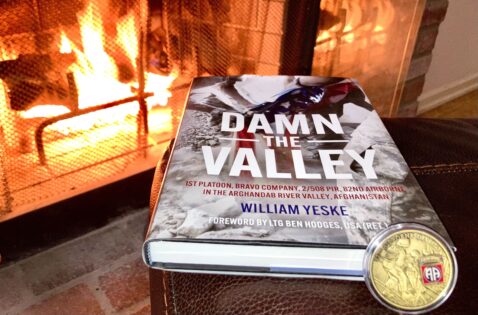
This work, Damn The Valley, is not just another reflection, written by a staff officer, about a career in the US military. This is a story written by an enlisted grunt; an infantryman giving a visceral account of what he and his brothers endured during a rotation in the Global War on Terrorism (GWOT).
In this memoir, Yeske describes in graphic detail the illnesses and injuries the men of 1st PLT, Bravo Company, 2nd Battalion, 508th Parachute Infantry Regiment, faced in combat. From parasites and dysentery, to loss of limbs and loss of life, those who survived experienced the full gamut of emotions during their year in Afghanistan. Yeske, chronicling his duties as a Radio Telephone Operator (RTO), is able to seize the reader’s attention as he recollects patrols and missions with multiple elements within 1st Platoon.
The RTO is a position assigned not to a particular fire-team or squad, but to the entire platoon. As such, Yeske participated in a multitude of patrols and was able to develop connections with many members of the unit. Through these connections, he effectively tells the story from the perspective of the guys while they were outside the wire, for days, and sometimes weeks, at a time.
The story begins with the author’s decision to reset his life by following his gut, leaving Connecticut, and joining the Army during wartime. After an attempt at Special Forces training, he received orders to “2 Fury” within the 82nd Airborne Division, and began preparing for deployment almost immediately afterwards.
Yeske describes the entire deployment process, from the trainup at Fort Bragg, the Joint Readiness Training Center (JRTC) rotation, the layovers in Ireland and Kyrgyzstan, and their arrival in Kandahar, Afghanistan.
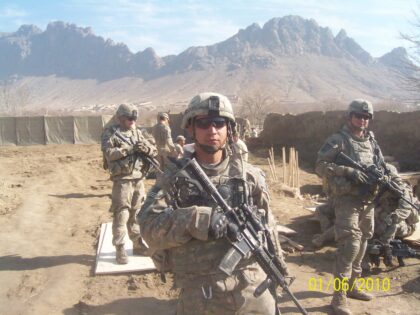
Bruno, Ross, and Pilcher. Photos courtesy of the Men of Bravo Company.
Eventually his unit is pushed out to the Arghandab River Valley, and is tasked with running operations in the sector. The higher-ups decided an Afghan farmer’s radish field would be the perfect spot to build a Combat Out-Post (COP) from the ground up. So, for 1st Platoon, on top of their duties to run missions in order to control the battlespace, they were also tasked with filling HESCO barriers, building an operations center, setting up concertina wire, constructing guard towers, and burning human shit, to make a functional camp.
“Deployment got real,” Yeske writes. “There were constant patrols rotating through the area while trying to accomplish the necessary base improvements and maintaining base security. It was insanity.”
The operations tempo continued unfazed for months; patrols never stopped, and casualties started mounting.
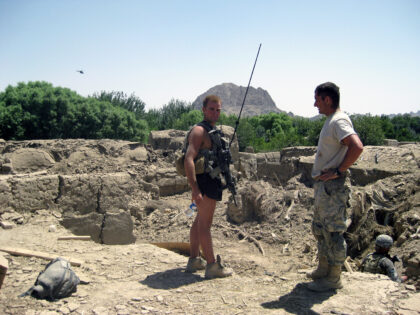
SSG Thompson and SGT Juaregi.
During one of many missions, this one the day after Christmas, 1st Platoon set out on an operation based on actionable intelligence about a bomb-making cell in the area. As 1st platoon walked into a nearby structure, Yeske pulled out the long-whip antenna to establish comms, and glanced back towards the entrance of the building.
“I had stepped over the same area myself just less than a minute prior,” he writes. “For whatever reason, the step that Towery made was a costly one. In what was a flash, but what seemed like an eternity, the entire side of the compound I was watching the men cross over disappeared in a massive cloud of dust with a resounding boom.”
Yeske called in a 9-Line MEDEVAC request, and watched as the bird took multiple casualties from the Arghandab. The next morning, as 1stt Platoon woke up back at the COP, some of the paratroopers heard music coming from the mosque. One of them asked the interpreter why music was being played; they asked him what the celebration was concerning.
“They are celebrating the death of your friend. I’m sorry, sir,” the man replied, hanging his head in shame.
In this hostile environment, Improvised Explosive Device’s (IED’s) proved to be the biggest threat to Yeske’s platoon on deployment.
The mujahideen learned how to construct IED’s during the Soviet occupation of Afghanistan in the 1970’s and 1980’s. During this period, in the Arghandab, they managed to wipe out an entire battalion of Soviets, often using these simple devices to destroy large armored vehicles.
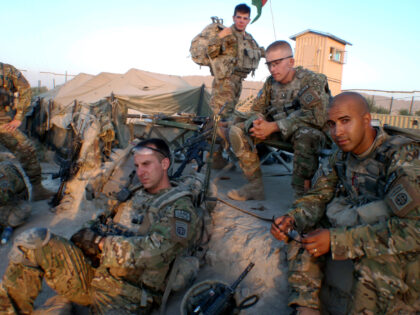
Two decades later, the American military, including elements of 2 Fury, were facing similar tactics. Yeske’s unit courageously faced these threats, every single day. At one point, while heading to a meeting in the village of Deh-e Kowchay, SSG Brunkhorst’s squad, from 3rd Platoon, discovered an IED. The unit remained in place while they awaited a site exploitation element from the nearest Explosive Ordnance Disposal (EOD) team. As SGT Lee moved from a separate location with a metal detector, he “checked the area and then told Watson to keep an eye out because he was going to cross the canal first. He aimed for the next pylon and jumped. BOOM!“
Lee had hit a separate IED only a ways off from 3rd Platoon, as they were moving to escort EOD to their location. Lee was injured as well, and now needed a MEDEVAC. While the fog of war introduced another factor to the situation, 3rd Platoon was rocked by an IED across the operational area.
As the dust cleared, and paratroopers rushed to aid the injured, they realized SSG Brunkhorst was gone. They began calling him on the radio, but were unable to reach him. As they searched the area, they “were pretty sure that Brunkhorst had been vaporized.” A DUSTWUN (DUty STatus Whereabouts UNknown) was called, and part of 1stt Platoon, as well as 2nd Squad, were given trash bags and ordered to collect whatever remains they could of SSG Brunkhorst. Bravo company later determined this had been a complex IED attack set up by a highly-competent insurgent team.
As deployment wore on, Yeske’s platoon continued with a fast and furious op-tempo, regardless of what the insurgents threw at them. By the end of deployment, the unit had suffered a 52% casualty rate, but had managed to identify an IED cell responsible for many of the strikes they had withstood. Yeske describes the bombardment placed on the Taliban targets, and best summarized the feeling of the entire unit when he quoted an EOD operator who stated: “Isn’t karma a mother fucker?”
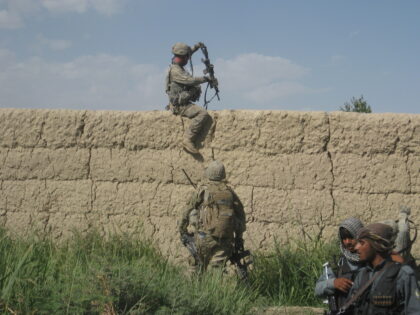
The only real critique I have of this book is that Yeske doesn’t go more in depth about the IED cell they took out. Maybe the information was classified, and he was not made privy to it, but finding out more about the insurgents, and their eventual downfall, would have been very interesting in my eyes. Nonetheless, the men of this unit never stopped fighting until the day they left the Arghandab.
Damn the Valley is an incredible story of resilience by the men of 1st PLT, Bravo Company, 2nd Battalion, 508th Parachute Infantry Regiment during their GWOT deployment to Afghanistan. Author William Yeske does an incredible job synthesizing his personal accounts, the memories of his platoon-mates, and the research he conducted, into an intense story that is difficult to put down.
The horrors these men witnessed, and the perseverance they showed on the battlefield, forged the brotherhood they share to this day. Yeske’s narrative gives the reader an in-depth perspective of what it was like to serve deep in the heart of the Arghandab Valley, as an airborne infantryman, in one of America’s premier fighting forces: the 82nd Airborne Division.
Heath Hansen spent five years as an airborne infantryman with the 82nd Airborne Division. He deployed to Afghanistan from 2005 to 2006 and Iraq from 2007 to 2008. He writes frequently for Soldier of Fortune.
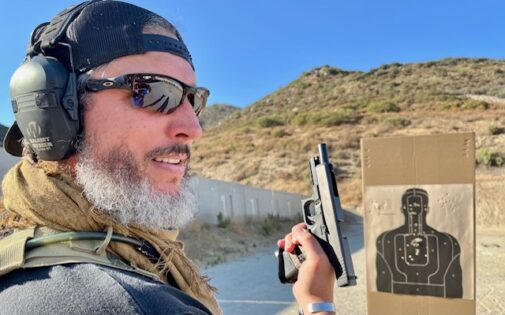
Heath on the range, August 2024.
